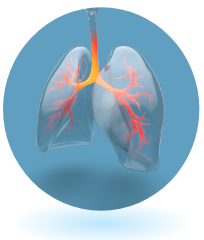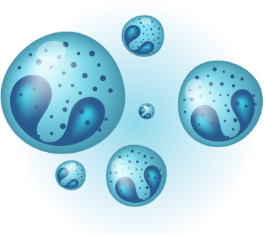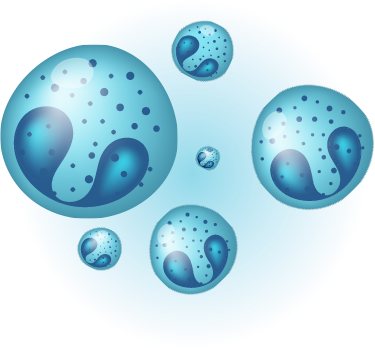

If you’re living with asthma,
taking care of yourself starts with understanding the type of asthma you have.
Knowing your asthma type is especially important if you are taking multiple treatments, but symptoms still interfere with your daily activities. If this is you, there may be a treatment option available so you can start getting back to things that matter.
What is asthma?

Asthma is a long-term condition that is caused by inflamed airways.
If you’ve been living with asthma for a while, you already know the common symptoms. And when symptoms get worse, it’s called an asthma attack (exacerbation).
An attack can happen after exposure to a “trigger” – something that causes your immune system to react and increases inflammation in your lungs. Triggers are different for everyone. Common triggers include dust, mold, and outdoor air pollution.
Usually, asthma symptoms can be managed with a combination of oral and inhaled medications. But sometimes, that’s not enough.
Poorly controlled, severe asthma can be different.
Poorly controlled, severe asthma is hard to manage even with high-dose inhalers and oral steroids.
Here are some signs that your asthma may be severe and poorly controlled:
- Even if you’re taking multiple asthma medications, you still have symptoms.
- You sometimes have to take oral steroids for asthma attacks.
- Symptoms wake you up at night.
- You need to go for breathing treatment at your doctor’s office.
- You’ve been to the emergency room or hospital due to asthma symptoms.
It’s important to know that some people with severe asthma have high levels of white blood cells called eosinophils. Severe asthma with high eosinophil levels is called “eosinophilic asthma.”
What are eosinophils?


Eosinophils are a type of white blood cells.
Eosinophils are white blood cells that help fight infection and illness. We all have eosinophils. They’re a normal part of our immune systems.
But some people with severe asthma have too many eosinophils. High levels can lead to inflammation of the airways, asthma symptoms, and asthma attacks.
How do I know if I have high eosinophils?
Your doctor can measure your eosinophil levels with a simple blood test.
If your test results show a high level, your doctor may recommend additional treatment such as CINQAIR. CINQAIR reduces eosinophils – and that can mean reduced asthma symptoms*.
*The mechanism of Cinqair action in asthma has not been definitively established.

How do you say “eosinophil”?
Eosinophil is pronounced: ee-uh-SIN-uh-fil
Eosinophilic Asthma Symptoms


Eosinophilic asthma symptoms can happen when you’re exposed to an asthma trigger.
Asthma triggers activate your immune system to produce eosinophils and cause them to multiply. This increase in eosinophils can lead to airway inflammation, asthma symptoms, and asthma attacks.
CINQAIR is a treatment that reduces eosinophils.
Find out if CINQAIR may be right for you.


